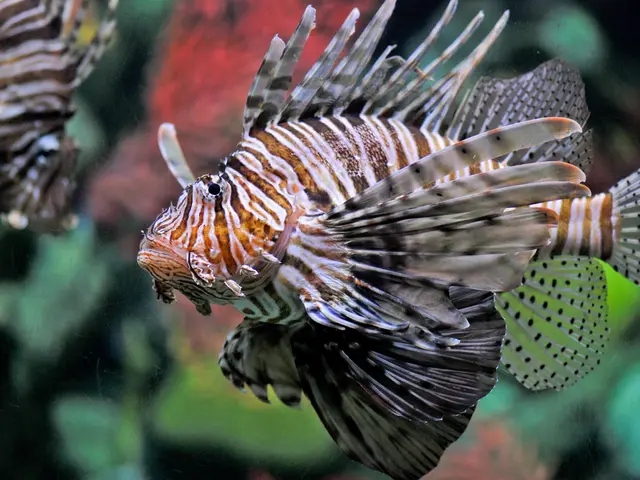Mosquito species known as the tiger mosquito exhibit surprising abilities, capable of reproducing with an unexpected 'substitute' - a bottle lid.
In the vibrant city of Dresden, Germany, public health authorities are taking proactive steps to control the spread of the Asian tiger mosquito (Aedes albopictus). This invasive species, which has been spreading across Europe due to climate change and global trade, poses a potential risk for disease transmission, such as dengue or chikungunya.
To manage the mosquito population effectively, an integrated approach is being employed.
Eliminating Breeding Sites
Residents are encouraged to remove or regularly empty containers that collect standing water, such as flower pots, buckets, rain barrels, discarded tires, and gutters. The Asian tiger mosquito breeds in small stagnant water bodies, and by reducing these breeding places, the mosquito population can be significantly decreased.
Environmental Management
Promoting proper waste disposal and maintaining clean habitats around residential areas is crucial in reducing mosquito breeding sites. A clean environment not only improves the overall health of the community but also helps in controlling the mosquito population.
Public Awareness Campaigns
Educating residents about mosquito life cycles and encouraging community participation in source reduction is essential. By understanding the mosquito's life cycle, people can take preventive measures to reduce the number of breeding sites in their homes and neighbourhoods.
Use of Insecticides and Larvicides
Approved larvicides are used to kill larvae in standing water that cannot be eliminated. In some cases, insecticides may be used for adult mosquitoes. These chemicals are targeted at specific life stages of the mosquito, aiming to reduce the population without causing harm to humans, animals, or plants.
Monitoring and Surveillance
Ongoing surveillance of mosquito populations is crucial to detect and respond quickly to outbreaks. By closely monitoring the mosquito population, authorities can take prompt action when necessary, helping to control the spread of the Asian tiger mosquito.
In Dresden, a specialized company is targeting the Asian tiger mosquito to control its spread. Experts are treating manholes and sewage shafts with a biological agent that targets mosquito larvae, while residents are asked to report breeding sites and cover rain barrels with a mosquito net.
Residents can request BTI tablets, a safe and effective larvicide, at the city district office Neustadt. The tablets are distributed free of charge and are to be used at the exact location of tiger mosquito sightings. A short instruction is necessary for the use of BTI tablets, which will be provided before issuance.
The Asian tiger mosquito was first detected in Saxony, including in Dresden, last year. Since then, it has reappeared in the Neustadt district, prompting these control measures. Standing water collections, such as watering cans, plant saucers, or gutters, should be emptied, cleaned, and refilled regularly to prevent mosquito breeding.
By implementing these integrated mosquito control practices, Dresden aims to manage the Asian tiger mosquito population effectively, ensuring the health and safety of its residents.
- In Dresden's continuous efforts to control the Asian tiger mosquito, residents are requested to remove standing water from containers like flower pots, buckets, and rain barrels, as these aquatic environments serve as breeding sites for the mosquito.
- To mitigate the potential health risks associated with the Asian tiger mosquito, the city of Dresden emphasizes the importance of environmental management, with an emphasis on promoting proper waste disposal and maintaining clean habitats to reduce mosquito breeding sites, thereby improving the overall health-and-wellness of the community.




